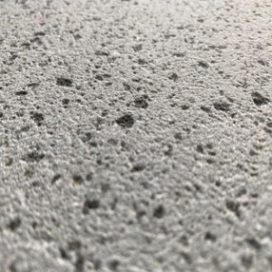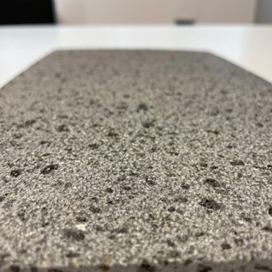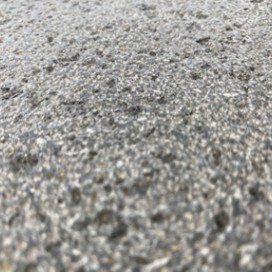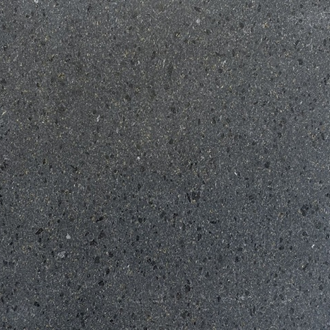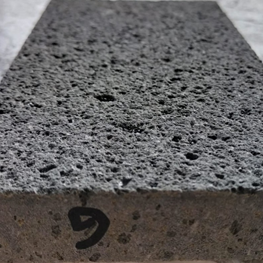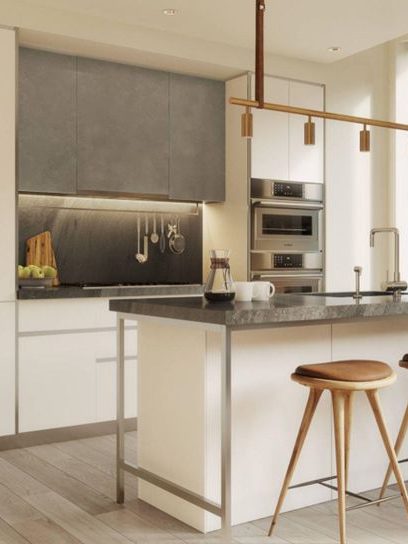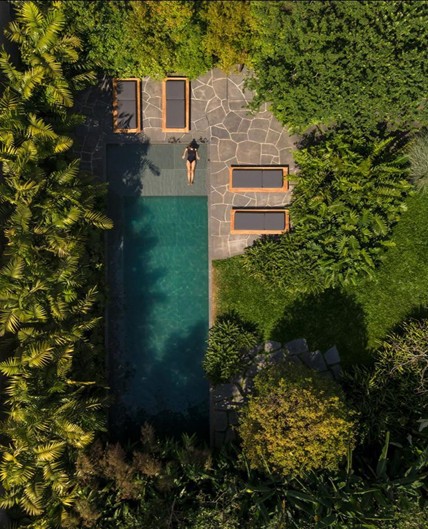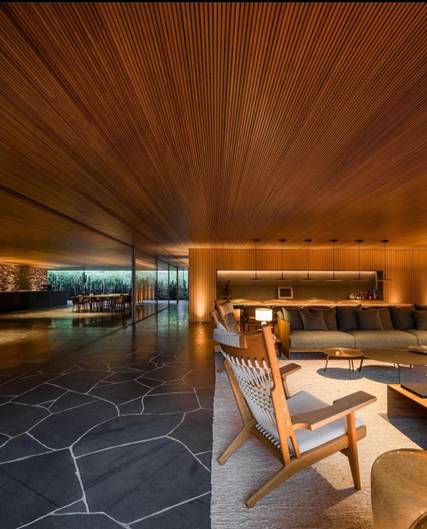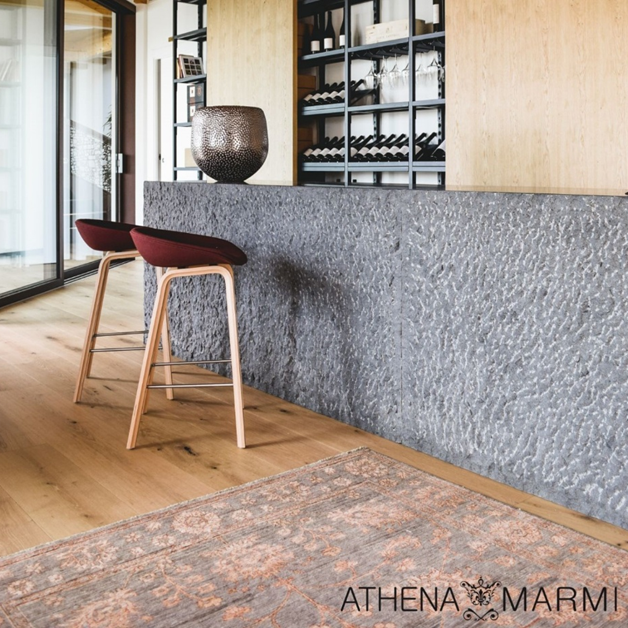LAVA STONE
EXPLORE
2025-05-15
Basaltic rock that can be worked in over 20 different finishes, Lava stone is an extremely versatile material, suitable for use both in urban contexts and in design projects.
Type: BASALT
Finishes: POLISHED, HONED, BRUSHED,
SANDED, BLASTED, …
Colour: DARK GREY
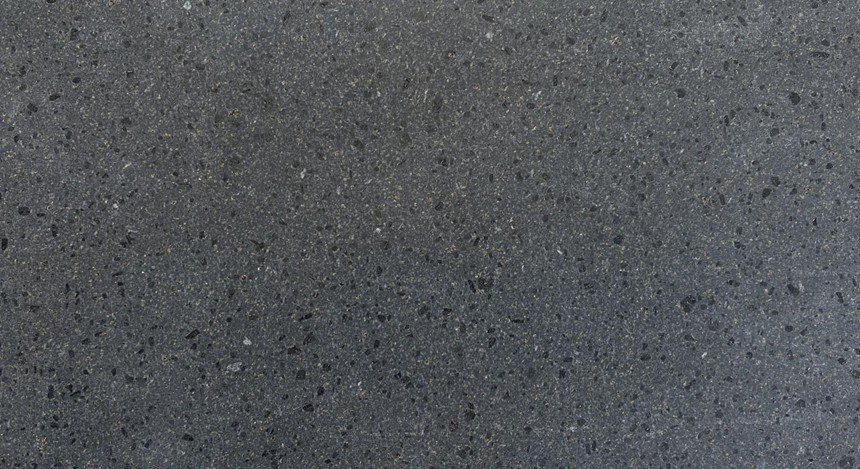
Geological origin of the lava stone, the marble that comes from Etna
Lava Stone is an effusive rock of volcanic origin originated from Etna, the largest active volcano in Italy and the entire Eurasian plate.
The lava flows of Etna, in contact with the air, cool and solidify giving rise to a stone that, based on its geological formation, cannot be technically categorized as a marble, even if it is so commonly defined. The lava stone is a basaltic rock.
The result of this process is an extremely versatile natural stone with a dark grey colour. The surface characteristics of the lava stone and its nuances are variable and are due to the different mineral composition of the material, which varies according to the extraction points of the subsoil of Etna.
The available slabs of lava stone in our warehouse, are the result of the lava flows of Etna volcano, which occurred in recent times, from 1969 to today.
Methods and areas of extraction of lava stone
In ancient times the lava stone was extracted along the ridges of Etna with the help of tools such as chisel, Mazzola and hammer. Only the surface layers were taken, which were more porous and easier to work with.
Currently, the extraction of lava stone is carried out with the aid of mechanical shovels, excavators and diggers, which allow to reach the deepest layers, where the stone is more compact, harder and lighter in colour.
Although today the extraction takes place by means of tools and mechanical technologies, the finishing activities of the lava stone are still entrusted to the work of craftsmen stonemasons.

Lava Stone: characteristics and finishes
The slabs of lava stone are particularly appreciated, both in urban planning and for projects of architecture and design, for its technical characteristics:
- High resistance to thermal shock
- High resistance to weather
- Excellent durability
- Low porosity, which facilitates maintenance and cleaning
- High compressive strength, making it ideal for structural applications.
| TECHNICAL FEATURES | PHYSICAL CHARACTERISTIC | ||
| Bul specific gravity | 2.795 Kg/mc | Average volume weight | 2.658 gr/cmc |
| Water absortpion value | 10,20% | Actual specific weight | 2.856 gr/cmc |
| Compression breaking load | 113,4 Mpa | Porosity | 6,93% |
| Elastic tangent modulus | 25,03 Mpa | Average compression strength | 1462 kg/cmq |
| Elastic secant modulus | 18,34 Mpa | Frost shattering | 1930 kg/cm1 |
| Breaking load due to indirect traction by means of bending | 10,70 Mpa | Resistance to wear | 0.64 |
| Wear due to sliding friction: abrasion coefficient in Tribometer | 4,37 mm | Shattering coefficient | 115.8 |
| Resistance to breakage on impact (minimum fall height) | 63 cm | Resistance to bending | 167.2 kg/cmq |
| Knoop micro hardness | 4835 Mpa | Total breaking load | 0.275 mm |
In addition, the surface of the lava stone slabs can be customised with a very wide range of finishes, which allows them to adapt to different uses. Among the most requested finishes we find:
- Sandblasted lava stone or water jet: it creates an effect of “aging” or “controlled wear”, giving an ancient and authentic appearance to the stone. Ideal for outdoor use.
- Rammed lava stone: with a rough and textured surface, characterized by small regular cavities obtained through hammering, it is ideal for the laying of pavements in outdoor that require an anti-slip surface.
- Polished or honed lava stone: the colours and veins present in the stone are highlighted and give it an elegant and refined appearance. It is ideal for indoor use.
- Brushed lava stone: the rough and opaque surface gives the stone a rustic and natural look, highlighting its characteristic texture ideal for interiors.
It is also possible to carry out the following processes on lava stone slabs:
- flame, which causes micro-cracks that give the lava stone slabs an irregular texture and a more rustic appearance.
- inlay and carving, which allow you to create decorative patterns or carved details on the surface of lava stone slabs, giving a touch of uniqueness to the stone.
The processes can be combined or used individually to obtain the desired effect on Sicilian lava stone slabs, depending on the style and intended use.
Each type of processing, in fact, can contribute to enhance the natural appearance and distinctive features of lava stone. When it comes to coatings, the choice becomes even wider as more than 20 different processes can be realized thanks to modern machines and tools.
Lava stone: aesthetic features
The lava stone is characterized by a dark grey colour rather homogeneous, with nuances that can vary based on the mineralogical composition (as well as the chosen processing for the plates). Sometimes, the surface of lava stone slabs can have light veins or natural inclusions, which – as with any natural stone – highlight its uniqueness.
The different types of finishing applied to lava stone slabs allow extremely heterogeneous visual effects.
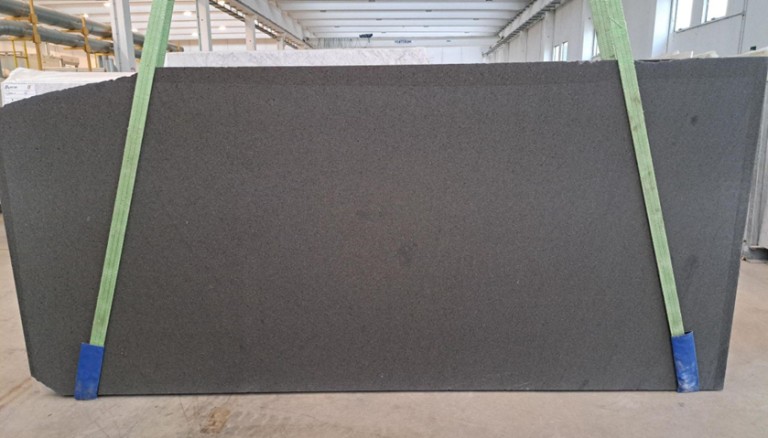
Lava stone: sectors and areas of use
Initially, the Lava Stone was used mainly in urban areas near the volcano Etna, for the construction of roads and houses, as well as for the creation of everyday objects and furnishings.
Today, lava stone slabs are exported all over the world, where they are appreciated for their interesting technical characteristics (in particular robustness and resistance to thermal shock) and for their wonderful aesthetic impact.
Lava stone is commonly used in:
- Building: lava stone floors, walls, facades and external and internal cladding are widely used due to their strength and durability.
- Landscape architecture: lava stone is used in the design of gardens, parks and public spaces, for the creation of paths, retaining walls, borders for flower beds and decorative elements.
- Interior design: for its natural beauty and unique appearance, it is chosen for floors, wall coverings, kitchen countertops, sinks and exclusive furnishing accessories.
- Kitchen: resistance to high temperatures makes it suitable for use in the kitchen, for making fireplaces, barbecues and fireplaces. It is also often used to make grill plates and worktops, for direct cooking of food in contact with heat.
- Art and crafts: works of art, sculptures, decorative objects and jewellery (the solid, stable surface can be worked with precision).
A material with a story to tell: the interpretation of Alberti & Alberti and the use of lava stone in design projects
For many decades, lava stone was considered a material for urban use. It was commonly used for flooring, cladding and facades, especially in the areas closest to the extraction area.
In Alberti & Alberti we have sensed other potential of lava stone: its textured and elegant texture, and the variety of finishes to which the material lends itself, make this material one of the most versatile within natural stone. We are therefore committed to spreading its use in the field of design and architecture.
Thanks to the collaboration with architects and designers who have experimented with Lava Stone in valuable environments and uses, we were able to highlight this material that probably had another story to tell, of which we are happy to be the authors.
Lava stone design projects: one material, many yields
In this project realized for a winery in collaboration with Athena Marmi, a company specialized in the artistic processing of marble, lava stone has proved to be the ideal solution in search of a natural and innovative material, with a strong bond to the soil of volcanic origin on which the cellar is located.
This project fully embodies the versatility of the material: the slabs of lava stone have been used in multiple environments of the winery, both inside and outside. For each use, the most suitable finish was evaluated: from external stairs to the bar, chairs, shelves, sidewalks and the terrace of the event hall. The result is a material atmosphere, vivid and of strong aesthetic impact in all environments, as well as a durable and resistant project, thanks to the ideal technical characteristics of the lava stone.
Alberti&Alberti, together with architects and designers, has collaborated on several projects that give new light to this material always dedicated to the urban context.
Do you have a project in mind? Contact us to see how the Lava Stone can enhance your idea!
At our main warehouse we have a wide choice of first quality lava stone slabs and spangles in various sizes and thicknesses to fully meet the needs of our customers.
Check the availability of Lava Stone slabs in real time?

